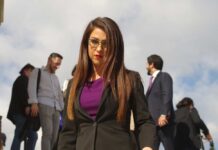
While inspecting a Coast Guard helicopter for normal wear and tear, an officer found a snake hidden and entangled in the Coast Guard helicopter’s tailwheel.
2nd Class Petty Officer Cole Lindvall shared a photo of the snake on social media by the United States Coast Guard Station Clearwater in Florida, who discovered it while inspecting the aircraft. According to a Facebook post on February 11, the stowaway was found dozing off on a Jayhawk tailwheel.
Facebook users expressed their amusement as the photo of the snake went viral, reaching thousands of people on social media. Like Lindvall, numerous social media users have voiced their aversion to snakes. A commenter joked that whether it’s venomous or not, it’s now his helicopter.
A closer inspection revealed it was a two-foot-long corn snake. These snakes do not have any poisonous properties, but they can suffocate their victim by coiling around it and swallowing it whole. A crew member who wasn’t scared of snakes removed the serpent from the vessel. It was let go into the grass far from the hangar.
Research shows that snakes are cold-blooded reptiles and are most prevalent in the United States during the summer. They are, nevertheless, visible at any time of year. Snakes will slither inside homes for protection, or because they are drawn to certain spots when they smell food, it is not unusual to see them in unusual locations.
The length of an adult corn snake ranges from 2 to 6 ft. They often live six to eight years in the wild but can live twenty years or more when kept as pets. The longest duration a corn snake has been in captivity was thirty-two years.
In comparison to copperheads, they stand out due to their more vibrant colors, slimmer bodies, round eyes, and absence of pits that detect heat.
Despite snakes’ menacing appearance, they seldom attack humans unless provoked. Preserving native species is crucial because they are essential in local ecosystems.













